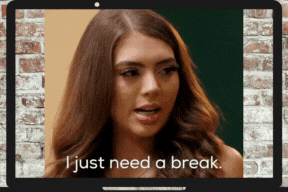How to Build Positive Routines and Break Bad Ones
Disclosure: Some links may be affiliate links, but we only recommend products and services we personally believe in.
Imagine it’s a crisp Monday morning, and Julia is ready to kick off her week right. She takes a deep breath, puts on her sneakers, and steps out for her daily jog. As she runs, she feels a surge of pride. This jogging has turned into a key habit, boosting her energy and mood.
But for every Julia who excels in creating good habits, someone is trying to ditch bad ones. The key to both making and breaking habits is grasping the habit cycle. This includes the trigger, the action, and the reward. Many just focus on the action, but to stick or break a habit, you need to look at all three parts.
When we keep doing something, it becomes automatic in our brains. This makes breaking habits tough. Habits form when our brain links an action to a reward, giving us a dopamine boost that keeps us doing it.
Key Takeaways
Understand the habit cycle: trigger, action, and reward
Repeated actions lead to automated behavioral patterns in the brain
Habits are formed when the brain associates an action with a reward
Strategies for building good habits include starting small, being consistent, and using triggers
Strategies for breaking bad habits involve identifying triggers, replacing habits, and seeking support
Understanding the Science of Habits
Habits shape our daily lives and free up our minds. But what’s behind forming habits? It’s how our brains process and automate actions.
Repeating an action makes the brain paths for that behavior more efficient. The frontal lobe and basal ganglia work together. They link thoughts, feelings, and actions with rewards, creating a cycle of trigger, action, and reward. This cycle makes the brain use fewer neurons, automating the behavior.
“Habits are an important adaptation that allows us to complete many daily activities without conscious thought, freeing up our higher brain functions.”
The science of habit formation and behavior change comes from brain science and the psychology of habits. Dopamine, a neurotransmitter, is key in the reward phase of habits. It reinforces behaviors quickly. But, the brain doesn’t know if a habit is good or bad. So, understanding the neuroscience of habits is vital to change them.
Trigger: An environmental cue that prompts the habit to begin.
Action: The routine behavior that is performed in response to the trigger.
Reward: The positive outcome that reinforces the habit, often involving the release of dopamine.
Knowing the habit cycle helps us use our brain’s nature to create good habits and break bad ones. The trick is to spot the triggers, change the actions, and find new rewards that match our goals.
Strategies for Breaking Bad Habits
Breaking bad habits can seem hard, but you can change for good with the right strategies. Research shows that key steps include moving actions from the subconscious to the conscious mind. It also means reducing the brain’s desire for rewards and changing how we reward ourselves.
“Extinction” is a method that weakens the link between a cue and the reward that started the habit. This can be done by making a conscious effort and repeating new, healthier actions. Starting with small steps, setting “if-then” plans, and having a friend to keep you on track can also help break bad habits.
Move the decision to act from the subconscious to the conscious mind
Diminish the brain’s desire for the associated reward
Change the reward system
Weaken the association between the cue and the reward through “extinction”
Start small and create “if-then” scenarios
Enlist the support of an accountability partner
To break bad habits, habit change, and behavior modification, you need to keep trying and be ready to swap habit replacements for better ones. By learning about the science of habit disruption and habit building, you can make positive changes in your life.
“Consistency in adopting healthier habits was emphasized as pivotal for changing bad habits, according to the study mentioned above.”
For Women, Building and Breaking Habits
Women face special challenges when trying to change their habits. They often don’t see their achievements because they think men lead the way. They also value expertise too much, forgetting the importance of building relationships and being seen.
Successful women might not use their relationships to get ahead in their careers. Unlike men, they don’t see networking as the key to success. This can stop them from getting promoted, as they focus too much on their current job instead of learning for the future.
To help women’s health and women’s lifestyles, we need to tackle these habits. It’s important to understand how habits work, including triggers, actions, and rewards. Women should use their environment and social circles to their advantage. They should also focus on their “why” and be accountable to themselves.
Pin For Later!📌
“The practices and beliefs detailed in ‘How Women Rise’ offer women tangible strategies for developing self-awareness and effecting positive changes in their professional and personal lives.”
Building and breaking habits is a key way to empower female empowerment. It helps women deal with their unique challenges and reach their full potential for productivity and well-being.
The Role of Environment and Routines
Creating a habit-forming environment is key to making new habits or breaking old ones. Our surroundings and daily routines deeply affect our habits. Things like time, place, people, and feelings can shape our habits.
Knowing how the environment and routines work helps us succeed in changing habits. By making our environment support our goals, we make it easier to stick to good habits. This approach can quickly help us build positive habits.
A study on college students showed that moving to a new place changed their habits. When we travel or move, our habits can change too. This is because our usual cues and routines change.
“Habit sustainability is influenced by the environment, feelings, time of day, and social context. Change in performance contexts can bring habits under intentional control.”
By improving our routines and making a habit-forming environment, we can use location-based habits and manage cues better. This strategy helps us create lasting, healthy habits. These habits support our well-being and growth.
Mindset Transformation for Lasting Change
Changing habits is more than just new actions. It’s about changing how we think and believe. This shift helps us grow and improve ourselves.
Studies show that a growth mindset is key to lasting change. This mindset believes we can get better with effort, unlike a fixed mindset that thinks we’re stuck. People with a growth mindset are open to feedback and ready for challenges. These traits help them change in the long term.
The story of a Secret Service agent shows how a growth mindset leads to positive changes.
Robben Island’s experience shows how a growth mindset can break down prejudices, leading to big changes.
Having an “inside-out” mindset connects our inner thoughts with our actions and goals. This means our habits reflect our values and passions. When our habits match our priorities, we find the motivation for lasting change.
“The secret of change is to focus all of your energy, not on fighting the old, but on building the new.” — Socrates
Changing our mindset is a personal journey that needs reflection and trying new things. By changing our mindset, we can truly transform our habits. This leads to a more meaningful and empowered life.
Motivation Strategies and Self-Accountability
Building lasting habits is more than just having willpower. It’s about finding your inner motivation and being accountable to yourself. By understanding how habits form and using the right strategies, you can reach your full potential and make lasting changes.
Having an accountability partner is a strong technique. Studies show it can boost your success rate by up to 95%. Sharing your goals with others can also increase motivation and get you support, helping you achieve your goals.
Involve an accountability partner to increase your chances of success.
Create a “wins list” to track your progress and celebrate your achievements.
Start small with incremental habit changes to build momentum.
Your environment and routines play a big part in building habits. Research shows that environmental cues can help you meet your goals. It’s important to set up your surroundings to support your new habits for lasting change.
The journey of habit-building, behavior change, and goal-setting needs a complete approach. It should grow your motivation techniques and build self-accountability. By using these strategies and sticking with your goals, you can make lasting habit-tracking changes in your life.
“The key to building lasting habits is focusing not on outcome, but on the process.” — James Clear, author of “Atomic Habits”
Habit Tracking and Optimization
Habit tracking is a key tool for boosting productivity and personal growth. It lets us see our habits closely, find areas to improve, and adjust our daily life with data. There are many ways to track habits, like apps or calendars, for both good and bad habits.
Building new habits step by step is a smart strategy. Experts say to start with six new habits a day. Aim to do four to six habits each day for 21 days. This slow approach helps avoid burnout. After 21 more days, track your progress to see which habits stick.
Tracking habits can also help break bad patterns. By dividing the day into three parts, we can spot what triggers bad habits. Doing simple exercises like ten jumping jacks can stop us from falling into those habits.
Tracking habits has many benefits, like more motivation and better focus. But, it’s key to not get too caught up in the numbers. Taking breaks and thinking about our goals is important for success.
Choosing the right method for tracking habits is crucial. It could be a specific app or a calendar system. By using habit tracking, we can make our daily routines more efficient and reach our full potential.
And with that, Ladies...
Let’s Recap
The journey of building and breaking habits is a powerful tool for women to reach their full potential. This article has shown us the science behind habits. It explains how habits work, from the cue-routine-reward cycle to the impact of mindfulness and environment.
Changing behavior is not easy, but the benefits are huge. By learning to change habits, women can boost their productivity, health, and personal growth. Whether it’s quitting smoking, living healthier, or thinking positively, the strategies here can help.
The secret is a complete plan that looks at habits from all angles — physical, mental, and emotional. With the right mindset, support, and determination, women can change their lives. The future looks bright, and it’s time for women to take charge of their growth and empowerment.
**Stay Inspired and Informed! Join Our Exclusive Lilly’s Bloom Newsletter Today!**
💌Don't miss out on this journey of inspiration and empowerment. Sign up now and be part of a community that celebrates and uplifts women every day!
✨ Subscribe Now ✨
✗⚬メ𝟶,
Till Next Time,
Lilly
Frequently Asked Questions
〰️
Frequently Asked Questions 〰️
-
The key to building and breaking habits is understanding the habit cycle. This includes the trigger, the action, and the reward. Many people focus only on the action. But to make a habit stick or break, you must look at all three parts of the cycle.
-
Habits form when an action is repeated and becomes automatic in the brain. This makes them hard to break. The brain links completing an action with a reward, causing a dopamine surge. This surge motivates the behavior.
-
Strategies for building or breaking habits include understanding the rewards, improving your environment, and using accountability partners.
-
Breaking a habit involves three steps. First, move the decision to act from the subconscious to the conscious mind. Second, reduces the brain’s desire for the reward. Third, change the reward system.
-
Women may face unique challenges in building and breaking habits. Understanding the habit cycle and addressing the full trigger-action-reward system is key. Strategies that consider environmental and social influences can help. Focusing on a strong “why” and self-accountability is also important.
-
Our environment and daily routines greatly influence our habits. Triggers like time, location, people, and emotions shape our behaviors. Creating a supportive environment can help build good habits by making healthy choices easier.
-
Knowing your values and priorities is crucial for changing habits. Habits are often driven by rewards or perceived benefits. Understanding these motivations can help make lasting changes. A strong “why” is key to sticking with changes.
-
Rewards play a big role in forming habits. The anticipation of a reward motivates the brain to repeat a behavior. Strategies for building accountability include having an accountability partner, keeping a “wins list,” and starting small with new habits.
-
Tracking habits can show if they are strong or just actions. Removing rewards from a habit can reveal if it’s truly a habit. Pairing new habits with routines or replacing bad habits with healthier ones makes changing behaviors easier.


























